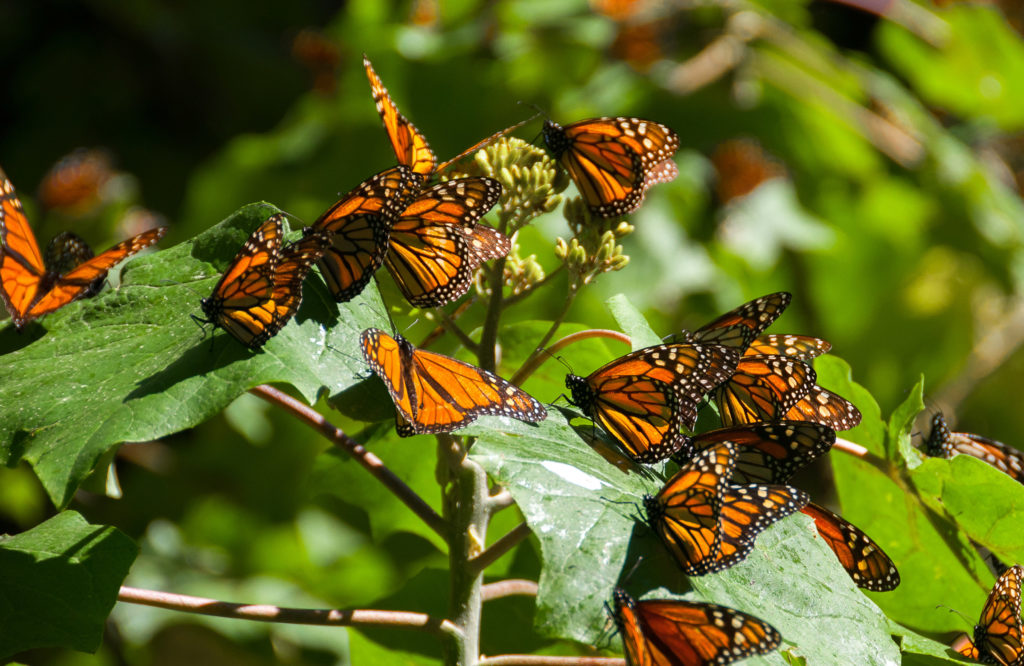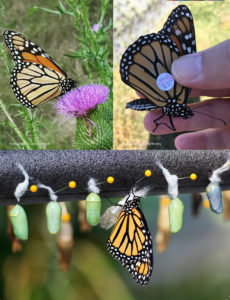A Joint Effort To Save the Monarch Butterfly
In recent years, Monarch butterflies have been threatened by a parasite called Ophryocystis elektroscirrha (OE), which ultimately kills them, putting the entire migratory population at risk.
Although it is estimated that only eight percent of Monarch butterflies in the eastern United States have a heavy OE spore load, Kristy Morley, a naturalist with the Wissahickon Valley Watershed Association, has been dedicated to the conservation effort of Monarchs for the last few years. By placing a tracking sticker on the butterflies before setting them free for their migration to Mexico, scientists with Monarch Watch, a cooperative network of students, teachers, volunteers and researchers dedicated to the study of these butterflies, can effectively create a database about the health of Monarchs from around North America.
But the work proved to be challenging for Morley to handle alone. So in early 2018 when she was contacted by Becca Scheetz, the Volunteer Coordinator at The Hill at Whitemarsh, about setting up a staff and resident volunteer project, Morley’s mind immediately went to the Monarchs.
“I had tried—and failed—to raise and track the butterflies by myself, but it was just too time consuming,” says Morley. “This was an ideal citizen science project that we could take on with other organizations like The Hill. The ultimate goal was to tag the Monarchs in order to track their migration to Mexico.”
The Hill asked around to both residents and employees to see if anyone was interested in fostering Monarch butterflies, and the response was overwhelmingly positive. As a result, there were 30 butterflies that were raised at The Hill this past summer; 15 were given out to employees, 12 were given out to the residents and three were given to Mather House, the five-star skilled nursing center on the property.
“Overall, the experience was just awesome,” says Scheetz. “It lifted the morale of the whole community and brought back a lot of feelings and memories from our childhoods, which you don’t get very often as an adult.”
Not unlike experiences many of us had in grade school, those at The Hill who volunteered to foster butterflies were given containers, milkweed and eggs. Once the eggs hatch, they turn into caterpillars and eat the milkweed for sustenance. Containers must be cleaned every day—wiping excess moisture to prevent mold and dumping the caterpillar droppings—before replacing the milkweed supply. The process is not difficult, just time consuming.
“Initially, I didn’t think that it was going to be as demanding as it was,” Scheetz says. “The caterpillars eat constantly, and the containers need daily attention. It’s a lot of responsibility, but one that many of us welcomed whole-heartedly.”
Scheetz reported that many of the residents were truly moved by the experience of fostering their butterflies. One man told her that he hadn’t been responsible for something in a really long time, and it felt great to have these little creatures depend on him for survival. He felt like a “proud butterfly dad” by the end of the experience. Another woman told her that she couldn’t believe how beautiful the entire process was, and many others have expressed interest in fostering butterflies again next season.
After many of the caterpillars had completed their metamorphosis into butterflies, the employees and residents gathered outside of Mather House and released their butterflies into the wild.
“Releasing the butterflies had a spiritual component for many of us,” says Scheetz. “Watching a tiny egg hatch into a caterpillar and then change into this beautiful butterfly alters your idea about change—it doesn’t always have to be a negative thing.”
The partnership between The Hill and the Wissahickon Valley Watershed Association was more successful than either party could have anticipated. More members of The Hill have already signed on to foster butterflies next season, and Morley could not be more pleased with the outcome.
“Monarchs link so many different aspects of the environment—they’re part of one large ecosystem that connects Canada, the U.S. and Mexico,” Morley says. “The Monarch has become a very visual tool to educate people on the pitfalls of a changing environment and the benefits of maintaining a diverse ecosystem.”
In addition to the Monarch foster program with The Hill, the Wissahickon Valley Watershed Association is hoping to expand its reach to save more butterflies in 2019. If you’re interested in fostering a butterfly, visit the Wissahickon Valley Watershed Association website: http://www.wvwa.org/

